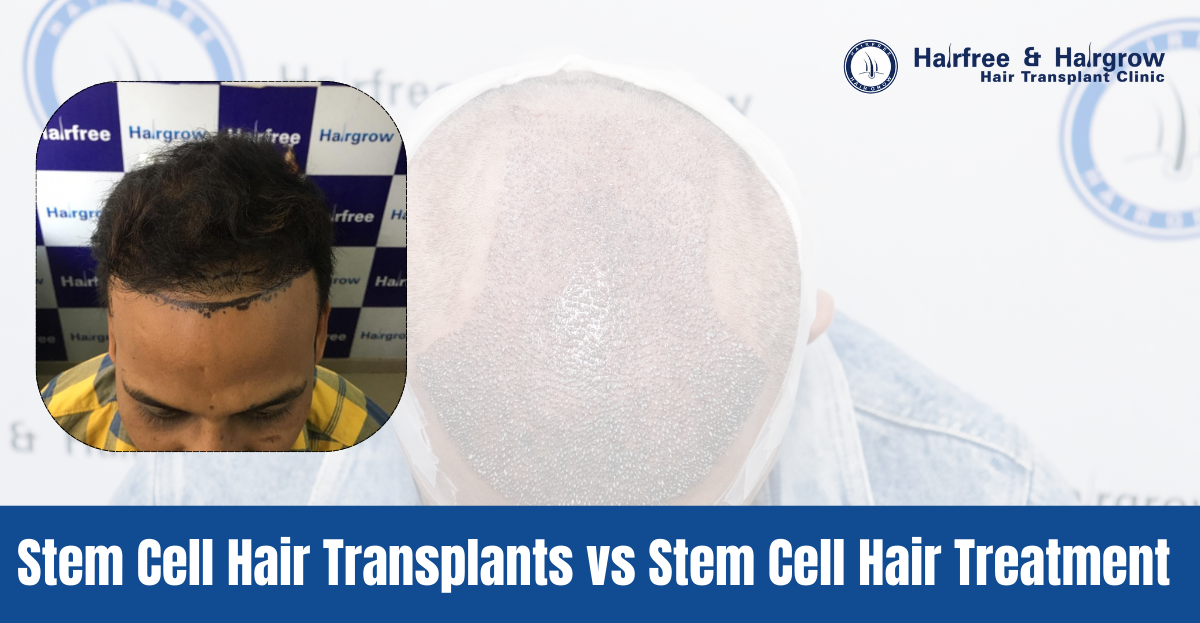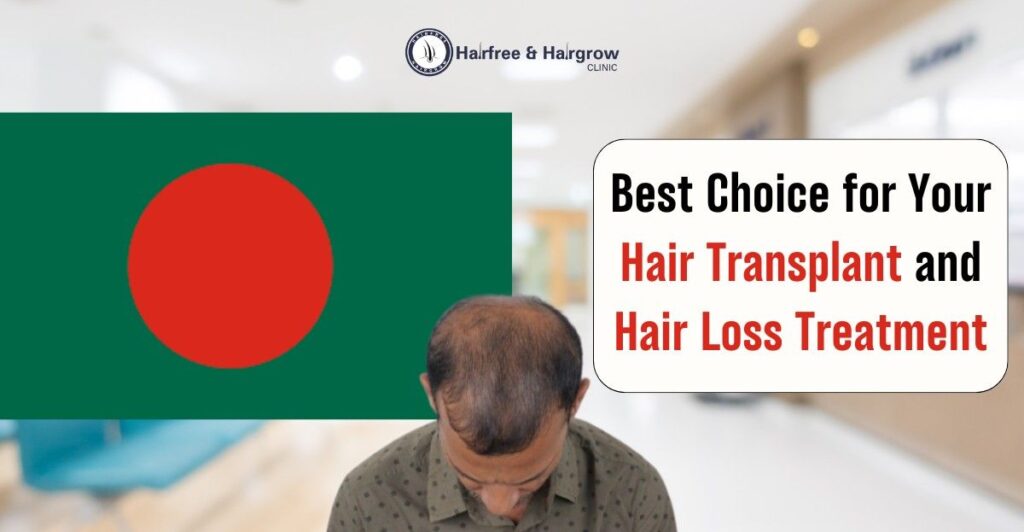Hair loss is a common concern that affects millions of people globally. While traditional treatments like hair transplants have been around for decades, newer advancements like stem cell hair treatments have emerged, promising more efficient results.
But what’s the difference between a stem cell hair transplant and a stem cell hair treatment? Let’s explore these two revolutionary options in hair restoration.
Table of Contents
Understanding Stem Cells
Stem cells are unique cells in the body that have the ability to develop into different types of cells and repair damaged tissues. In hair restoration, stem cells play a vital role by regenerating hair follicles and promoting new hair growth. The types of stem cells used in hair restoration are usually mesenchymal stem cells, derived from fat tissue or bone marrow.

What is Stem Cell Hair Transplant?
A stem cell hair transplant is an advanced procedure that combines the principles of traditional hair transplants with the regenerative power of stem cells. Here’s a simplified breakdown of the process:
- Consultation and Planning: The doctor conducts a detailed consultation with the patient and designs the hairline based on the patient’s facial features.
- Extraction of Stem Cells: About 50 ml of fat is extracted from the patient’s body, usually from the abdominal area. The fat tissue contains millions of stem cells that are essential for hair regeneration.
- Processing the Stem Cells: The extracted fat is processed to isolate the stem cells, which are then injected into the scalp. These stem cells help in boosting blood vessel formation, increasing graft survival, and promoting the growth of new hair follicles.
- Transplantation of Hair Follicles: Traditional transplant techniques are used to implant the hair follicles into the balding areas, with stem cells aiding in improving the thickness and health of transplanted hair.
Benefits of Stem Cell Hair Transplant
- It supports better survival and growth of hair grafts.
- Helps rejuvenate the skin by improving blood circulation.
- Enhances hair thickness and density.
- Increases the success rate of hair transplants.
What is Stem Cell Hair Treatment?
Stem cell hair treatment, also called stem cell hair restoration, is a non-surgical procedure that focuses on improving hair density and quality without the extraction or implantation of hair follicles. Here’s how it works:
- Extraction of Stem Cells: Small punches are used to extract fat tissues containing stem cells, usually from behind the ears or from the abdominal area.
- Centrifugation: The extracted fat is processed using a special machine that separates stem cells and mixes them with PRP (Platelet-Rich Plasma) to enhance the healing and growth process.
- Injection: The mixture of stem cells and PRP is injected into the scalp to stimulate the growth of new hair follicles and strengthen existing ones.
Benefits of Stem Cell Hair Treatment
- Promotes the growth of new, healthy hair follicles.
- Improves hair density and prevents further hair loss.
- Requires minimal downtime with no surgical incisions.
Comparing Stem Cell Hair Transplants and Treatments
When comparing stem cell hair transplants vs. stem cell hair treatments, it’s essential to understand the primary differences. Stem cell hair transplants involve the extraction and implantation of hair follicles along with stem cell injections, making it a more extensive procedure. On the other hand, stem cell hair treatments focus solely on using stem cells to regenerate hair, without surgical transplantation.
A stem cell hair transplant is ideal for those who want to restore significant hair loss with fuller, denser results. Stem cell hair treatment is better suited for those looking to improve their hair density or address early-stage hair loss.
Is Stem Cell Hair Transplant FDA Approved?
As of now, the FDA has not officially approved stem cell hair transplants. Although stem cell-based treatments are growing in popularity, they are still classified as experimental due to limited clinical evidence. This doesn’t mean they are unsafe, but it highlights the importance of consulting experienced professionals and understanding the implications.
Cost of Stem Cell Hair Transplant vs. FUE Transplant
The cost of a stem cell hair transplant varies based on the clinic and the extent of hair loss. On average, it can range between $4,000 and $10,000, which is typically higher than a traditional FUE (Follicular Unit Extraction) transplant due to the advanced techniques and equipment involved. However, the regenerative benefits provided by stem cells can make it worth the investment for long-term results.
Side Effects of Stem Cell Hair Transplant
Stem cell hair transplants are generally safe, but some patients may experience mild discomfort, redness, or swelling in the extraction and injection areas. These symptoms usually subside within a few days. It’s crucial to follow pre- and post-procedure guidelines, such as avoiding blood thinners, alcohol, and heavy exercise, to minimize complications.
Conclusion
Both stem cell hair transplants and stem cell hair treatments offer promising solutions for hair loss, with each option catering to different levels of hair thinning or balding. While stem cell transplants are more suitable for those looking for comprehensive hair restoration, stem cell treatments are ideal for individuals aiming to enhance their existing hair.
Whether you choose a stem cell hair transplant or treatment, consulting with a specialist will help you understand the best option based on your hair condition and goals.
FAQ
Stem cell hair treatments are highly effective in promoting hair density and preventing hair loss. However, for those with advanced balding, stem cell hair transplants are more suitable due to the combined effect of grafting and regeneration.
Anyone experiencing moderate to severe hair loss, with sufficient donor hair, is a good candidate for stem cell hair transplants. Those in the early stages of hair loss might benefit more from stem cell hair treatments.
Generally, stem cell hair restoration methods are safe with minimal side effects. However, patients should avoid blood thinners, alcohol, and strenuous activity a week before and after the procedure to reduce risks.
Yes, stem cell treatment is good for hair as it stimulates the growth of new follicles, strengthens existing hair, and improves overall hair density.

Written By
Medical Officer & Hair Transplant Surgeon
Dr. Nazmin Sultana Nipa is a distinguished hair transplant doctor in Bangladesh, known for her advanced skills in hair restoration. As a Medical Officer and Hair Transplant Surgeon, Dr. Nipa combines her extensive experience in the field with a focus on transparency and patient-centered care.
Disclaimer
We’ve made all possible efforts to ensure that the information provided here is accurate, up-to-date and complete, however, it should not be treated as a substitute for professional medical advice, diagnosis or treatment. See Detailed Disclaimers Here.



